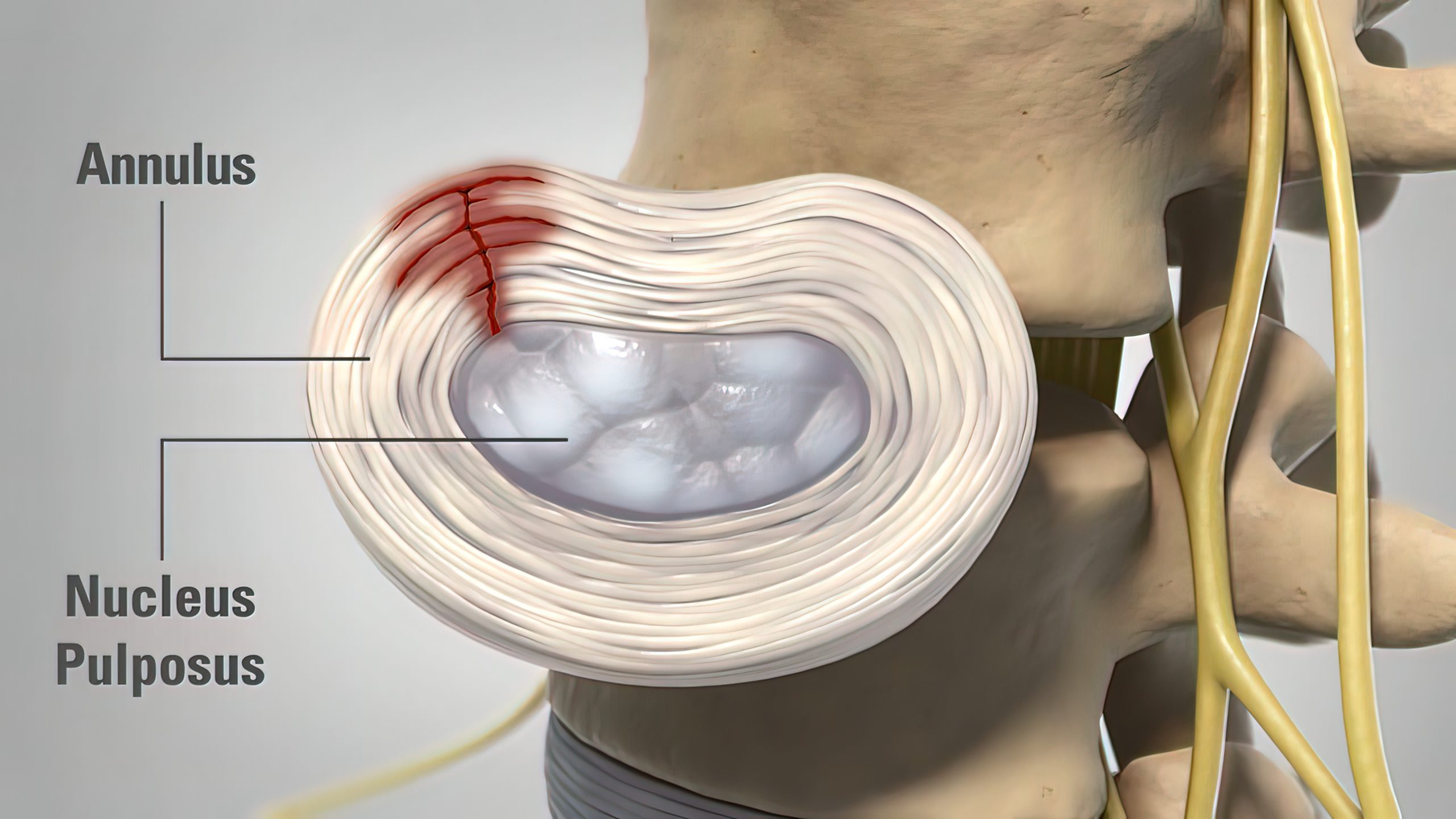Annular Tears
Annular tears develop in the spinal disc, which has two layers: the outer annulus fibrosus and the inner nucleus pulposus.
Imagine the spinal disc like a jelly doughnut, with the annulus fibrosus comprising the outer portion, enclosing and containing the jelly-like nucleus pulposus. The annulus fibrosus is made up of 22-25 layers of fibers that connect to the vertebrae above and below the disc.
The annulus fibrosus and nucleus pulposus distribute force and stress placed on the spine to prevent the vertebrae from rubbing against each other and ensure that nerves around the spine don’t become pinched or compressed.

Understanding Annular Tears
Unfortunately, the fibers of the annulus fibrosus may break down from daily wear and tear as a result of age or injury. This may lead to the development of tears in the annulus fibrosus called annular tears. These tears may allow the nucleus pulposus to leak out of the disc, causing irritation and inflammation of surrounding nerves. This is why annular tears are a common cause of back pain.
Annular tears have been known to be the cause of a variety of conditions, including:
- Disc herniation, bulges, and protrusions
- Degenerative disc disease
- Spine arthritis
- Bone spurs
Common Symptoms
Annular tear pain is typically either concentrated around the area where the tear is located or radicular, which means that associated pain and symptoms affect various areas served by the affected nerve root. If your lumbar spine is affected you’ll feel symptoms largely in your lower back and legs. Annular tears affecting the cervical spine may cause pain in the neck, between the shoulder blades, and in the arms, hands, and fingers. The nucleus pulposus leaking out may also result in Leaky Disc Syndrome.Other symptoms may include:
- Pain that worsens after sitting or standing for prolonged periods of time.
- Dull or achy pain in the lower back.
- Stinging, burning pain that moves from the lower back to the backs of the thighs or into the lower legs or feet.
- Numbness or tingling in the legs.
- Muscle spasms and tightness in the low back, pelvis, and hips.
- Difficulty standing up straight, walking, or going from standing to sitting.
- Persistent pain following surgery.


